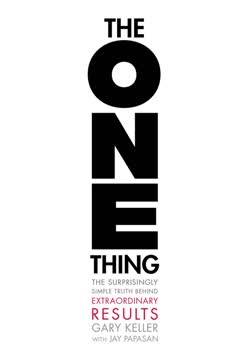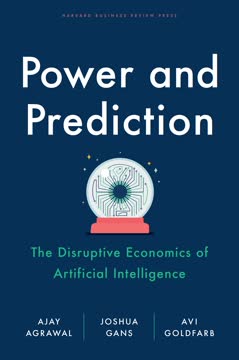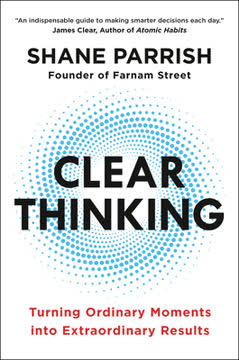Key Takeaways
1. Discover and leverage your strengths through feedback analysis
The only way to discover your strengths is through feedback analysis.
Feedback analysis method: Write down expected outcomes before making key decisions or taking significant actions. Compare actual results with expectations after 9-12 months. This practice reveals your strengths, weaknesses, and areas for improvement.
Actionable steps:
- Concentrate on your strengths
- Improve your existing skills
- Address knowledge gaps
- Overcome intellectual arrogance
- Remedy bad habits
By consistently applying feedback analysis, you can identify where your talents lie and focus on areas where you can produce the best results. This approach allows you to build on your strengths rather than struggling to overcome weaknesses, ultimately leading to greater success and satisfaction in your work.
2. Understand your performance style: reader or listener?
Eisenhower apparently did not know that he was a reader, not a listener.
Reader vs. listener: Knowing whether you absorb information better through reading or listening is crucial for effective performance. This self-awareness can significantly impact your communication style and decision-making process.
Examples of performance styles:
- Readers: Process information best through written materials
- Listeners: Grasp concepts more effectively through verbal communication
Understanding your performance style allows you to adapt your work environment and communication methods accordingly. For instance, readers may prefer written reports and memos, while listeners might benefit more from face-to-face meetings or audio presentations. Recognizing and accommodating these preferences can lead to improved productivity and better decision-making in both personal and professional settings.
3. Identify your learning style and adapt accordingly
Schools everywhere are organized on the assumption that there is only one right way to learn and that it is the same way for everybody.
Diverse learning styles: People learn in various ways, including writing, note-taking, doing, talking, and listening. Recognizing your unique learning style is essential for maximizing your potential and effectiveness.
Common learning styles:
- Writing (e.g., Churchill)
- Taking notes (e.g., Beethoven)
- Learning by doing
- Talking to oneself or others
- Listening and absorbing information
By identifying your preferred learning method, you can tailor your approach to acquiring new knowledge and skills. This self-awareness allows you to create an optimal learning environment and choose the most effective techniques for personal growth and professional development. Adapting your learning strategies to match your natural inclinations can lead to faster, more efficient, and more enjoyable learning experiences.
4. Align your values with your work for maximum effectiveness
To work in an organization whose value system is unacceptable or incompatible with one's own condemns a person both to frustration and to nonperformance.
Value alignment: Ensuring that your personal values are compatible with your organization's values is crucial for job satisfaction and peak performance. This alignment goes beyond ethics and encompasses the fundamental principles that guide decision-making and priorities.
Considerations for value alignment:
- Short-term vs. long-term focus
- Approach to innovation and improvement
- Organizational culture and mission
- Interpersonal relationships and management style
When your values align with those of your organization, you're more likely to feel motivated, engaged, and fulfilled in your work. This harmony allows you to contribute more effectively and authentically, leading to better results and a sense of purpose. Conversely, working in an environment that conflicts with your core values can lead to stress, dissatisfaction, and underperformance.
5. Determine where you belong based on self-knowledge
A small number of people know very early where they belong. Mathematicians, musicians, and cooks, for instance, are usually mathematicians, musicians, and cooks by the time they are four or five years old.
Self-awareness for career fit: Understanding your strengths, performance style, and values is essential in determining where you belong professionally. This knowledge enables you to make informed decisions about your career path and work environment.
Key questions to consider:
- Do you work best alone or in a team?
- Are you suited for a decision-making role or an advisory position?
- Do you thrive in structured or flexible environments?
- Are you better suited for large organizations or small ones?
By answering these questions and gaining a deep understanding of yourself, you can identify the types of roles and organizations where you're most likely to succeed. This self-knowledge allows you to pursue opportunities that align with your natural talents and preferences, leading to greater job satisfaction and career success.
6. Define your contribution to make a meaningful impact
Knowledge workers in particular have to learn to ask a question that has not been asked before: What should my contribution be?
Defining your contribution: To make a meaningful impact, it's essential to determine how you can best contribute to your organization or field. This involves assessing the current situation, leveraging your strengths, and setting achievable goals.
Steps to define your contribution:
- Analyze the situation and identify needs
- Consider your strengths and values
- Set specific, measurable goals
- Develop an action plan with clear deadlines
- Focus on results that make a difference
By clearly defining your contribution, you can focus your efforts on areas where you can have the greatest impact. This approach allows you to set meaningful goals, prioritize your work, and measure your progress effectively. A well-defined contribution not only benefits your organization but also provides a sense of purpose and direction in your career.
7. Take responsibility for relationships and communication
Whenever someone goes to his or her associates and says, "This is what I am good at. This is how I work. These are my values. This is the contribution I plan to concentrate on and the results I should be expected to deliver," the response is always, "This is most helpful. But why didn't you tell me earlier?"
Proactive communication: Taking responsibility for relationships involves understanding and adapting to the working styles of your colleagues, as well as clearly communicating your own strengths, methods, and expectations.
Key aspects of relationship responsibility:
- Recognize and respect individual differences
- Adapt to others' working styles
- Clearly communicate your own strengths and methods
- Seek to understand others' goals and expectations
- Foster open dialogue and mutual understanding
By actively managing your professional relationships, you can create a more harmonious and productive work environment. This approach involves both adapting to others and clearly expressing your own needs and expectations. Effective communication and relationship management can lead to improved collaboration, reduced conflicts, and better overall performance for both individuals and teams.
8. Prepare for a fulfilling second half of your career
We will see many more second careers undertaken by people who have achieved modest success in their first jobs.
Career longevity: With longer working lives, it's important to plan for a fulfilling second half of your career. This may involve starting a new career, developing a parallel career, or becoming a social entrepreneur.
Options for the second half of your career:
- Start a new career in a different field
- Develop a parallel career, often in nonprofit work
- Become a social entrepreneur
- Continue current work while reducing time commitment
- Volunteer or engage in community service
Preparing for the second half of your career requires proactive planning and self-reflection. It's important to start thinking about these options well before reaching mid-career to ensure a smooth transition. By actively managing your career trajectory, you can maintain engagement, find new challenges, and continue to make meaningful contributions throughout your extended working life.
Last updated:
FAQ
What's "Managing Oneself" about?
- Self-Management Focus: "Managing Oneself" by Peter F. Drucker is about understanding and managing your strengths, performance, and values to achieve personal and professional success.
- Historical Context: Drucker emphasizes that unlike historical figures who naturally managed themselves, most people today need to learn this skill due to the changing nature of work.
- Practical Guidance: The book provides practical advice on how to place yourself where you can make the greatest contribution and stay engaged throughout a long career.
Why should I read "Managing Oneself"?
- Career Development: It offers insights into how to develop your career by understanding your strengths and values.
- Self-Improvement: The book provides tools for self-improvement and personal growth, which are essential in today's dynamic work environment.
- Long-Term Success: Drucker’s advice helps in planning for a fulfilling and successful long-term career, including managing the second half of your life.
What are the key takeaways of "Managing Oneself"?
- Feedback Analysis: Discover your strengths through feedback analysis by comparing expected and actual outcomes of your actions.
- Performance Understanding: Know how you perform best, whether as a reader or listener, and adapt your work style accordingly.
- Value Alignment: Ensure your personal values align with your organization's values to avoid frustration and enhance performance.
How does Peter Drucker suggest discovering one's strengths?
- Feedback Analysis Method: Drucker suggests using feedback analysis, where you write down expectations for key decisions and compare them with actual results after a period.
- Consistent Practice: Practicing this method consistently over time reveals your true strengths and areas where you lack competence.
- Focus on Strengths: Concentrate on areas where you can produce results and work on improving your strengths rather than trying to fix weaknesses.
How does "Managing Oneself" define effective performance?
- Unique Performance Style: Recognize that how you perform is unique and largely determined by your personality.
- Reader or Listener: Determine if you are a reader or a listener, as this affects how you process information and perform tasks.
- Learning Style: Understand your learning style, whether by writing, doing, or talking, and use it to enhance your performance.
What role do values play according to "Managing Oneself"?
- Value System Importance: Values are crucial in determining where you belong and what kind of work you should pursue.
- Mirror Test: Drucker introduces the "mirror test" to ensure your actions align with the kind of person you want to see in the mirror.
- Organizational Fit: Your values must be compatible with your organization's values to avoid frustration and achieve results.
How does Peter Drucker suggest managing relationships?
- Understanding Others: Recognize that others have their strengths, performance modes, and values, and adapt to them.
- Communication Responsibility: Take responsibility for clear communication about your strengths, values, and expected contributions.
- Trust Building: Building trust through understanding and communication is essential for effective working relationships.
What is the significance of the second half of life in "Managing Oneself"?
- Boredom in Midlife: Many knowledge workers face boredom in midlife, having reached the peak of their careers.
- Second Career Options: Drucker suggests starting a second career, developing a parallel career, or becoming a social entrepreneur.
- Early Preparation: Begin preparing for the second half of your life early to ensure continued challenge and satisfaction.
How does "Managing Oneself" address career contribution?
- Self-Directed Contribution: Knowledge workers must ask what they should contribute, rather than waiting to be told.
- Situation Assessment: Determine what the situation requires and how your strengths can make the greatest impact.
- Result-Oriented Action: Focus on achieving meaningful, visible, and measurable results within a specific timeframe.
What are the best quotes from "Managing Oneself" and what do they mean?
- "What kind of person do I want to see in the mirror in the morning?" - This emphasizes the importance of aligning actions with personal ethics and values.
- "Successful careers are not planned. They develop when people are prepared for opportunities." - This highlights the importance of self-awareness and readiness for unexpected opportunities.
- "Organizations are no longer built on force but on trust." - This underscores the shift towards trust-based relationships in modern organizations.
How does "Managing Oneself" suggest handling weaknesses?
- Focus on Strengths: Concentrate on areas where you can excel rather than trying to improve weaknesses.
- Avoid Low Competence Areas: Minimize effort in areas where you have little chance of becoming competent.
- Skill Improvement: Work on improving skills and acquiring knowledge to fully realize your strengths.
How does Peter Drucker view the role of feedback in self-management?
- Feedback as a Tool: Feedback analysis is a critical tool for discovering strengths and areas for improvement.
- Performance Insights: It provides insights into what you are doing or failing to do that affects your performance.
- Continuous Learning: Regular feedback helps in continuous learning and adapting to maximize your strengths.
Review Summary
Managing Oneself is highly regarded as a concise yet impactful book on self-management and career development. Readers appreciate Drucker's emphasis on identifying personal strengths, understanding one's work style, and aligning values with organizations. The book offers practical advice on self-improvement, relationship management, and planning for the second half of one's career. While some find it basic, many praise its timeless wisdom and recommend it as an essential read for professional growth. The book's brevity and straightforward approach make it accessible and worthy of repeated readings.
Similar Books









Download PDF
Download EPUB
.epub digital book format is ideal for reading ebooks on phones, tablets, and e-readers.













